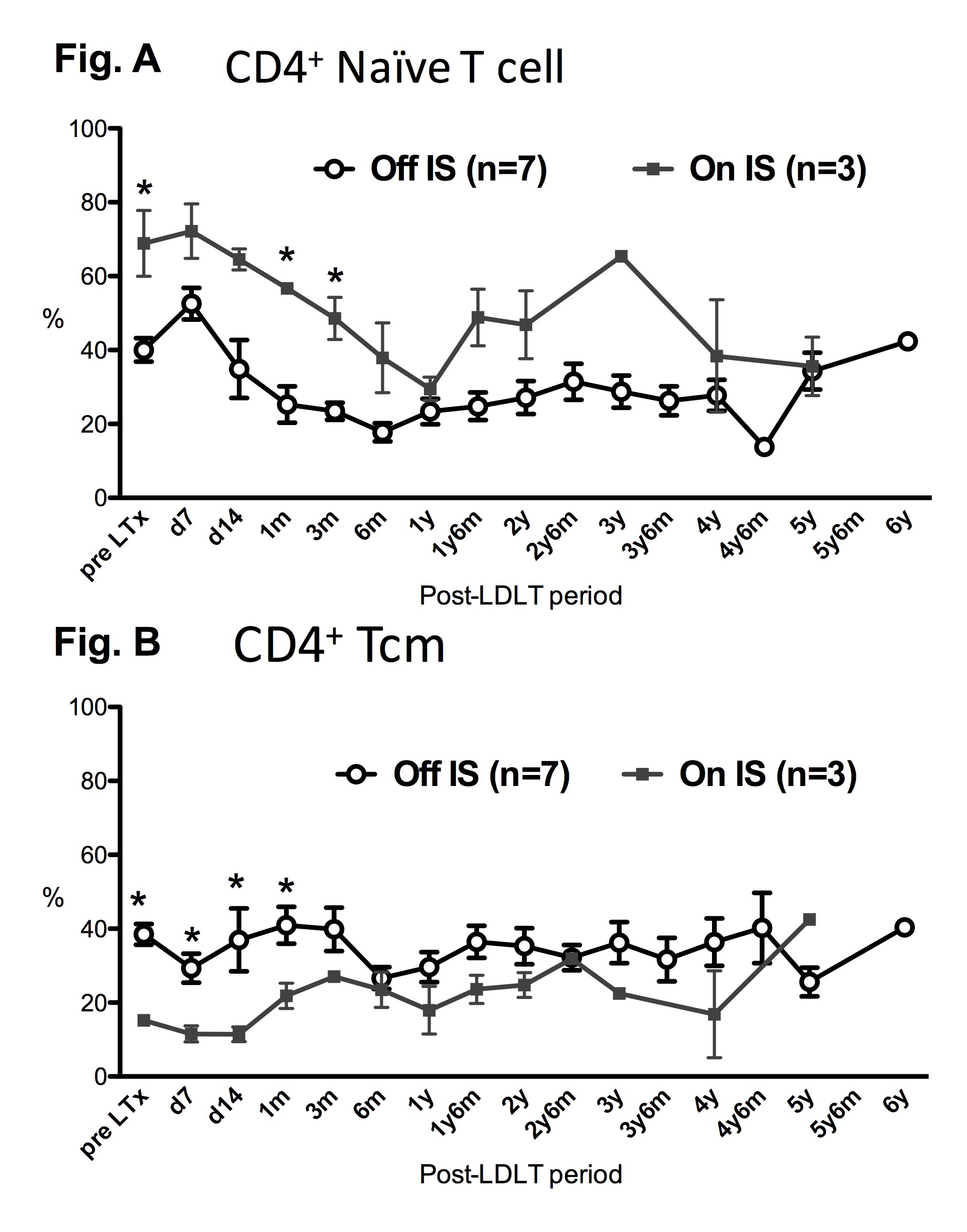The Immune Monitoring for Operationally Tolerant Recipients Following a Regulatory T cell-based Cell Therapy
Ryoichi Goto1, Masaaki Zaitsu1, Akihisa Nagatsu1, Shin Emoto1, Yasutomo Fukasaku1, Yoshikazu Ganchiku1, Masaaki Watanabe1, Tetsu Oura1, Minoru Ota2, Tomomi Suzuki1, Akinobu Taketomi1, Tsuyoshi Shimamura2, Satoru Todo3, Kenichiro Yamashita3.
1Department of Gastroenterological Surgery 1, Hokkaido University Graduate School of Medicine, Sapporo, Japan; 2Division of Organ Transplantation, Hokkaido University Hospital, Sapporo, Japan; 3Department of Transplant Surgery, Hokkaido University Graduate School of Medicine, Sapporo, Japan
Background and Aim: We have firstly demonstrated that regulatory T cell (Treg)-enriched cell therapy efficiently promotes an operational tolerance in 7 of 10 cases of living donor liver transplantation (LT). To identify the tolerant immune status and immunological characteristics of the patients following a cell therapy, we evaluated the immune profiles for a total of 5 years including 3.5 years of completely off IS.
Methods:PBMCs were collected at pre- and post-transplant periods (7, 14 days, 1, 3, 6 months and annually) from the patients including 7 patients who successfully weaned off IS (off IS group) and 3 patients who were unable to be completely off IS due to a rejection (on IS group). Immunological assays including lymphocyte subset analysis (FCM) and allo-immune responses (IFNg ELISPOT and MLR) were performed.
Results: The dynamic immune profile showed that the anti-donor reactivity was occasionally observed without histologic evidence of rejection in a tolerant case. Meanwhile IFNg ELISpot and cell proliferation assays displayed a donor-specific hyporesponsiveness at long-term; 5 (2-6) years post-LDLT in all patients although the slightly higher frequencies of anti-donor CD4+ T cell reactivity were found in on IS group. Also an increase in the percentage of CD4+Foxp3+ Tregs during early periods was observed in off IS group (n=7, d7, d14 and d28 post-LT vs. pre-LT, p<0.05, paired T test). Interestingly such phenomenon was found at long-term post-LT (15.9% in off IS vs. 6.47% in on IS). Furthermore, CD4+ lymphocytes in the peripheral blood obtained from the patients in on IS group (n=3) at pre- and early duration post-LT, were expressed CD45RA and CD62L (so-called naïve subset, *p<0.05 vs. off IS, Fig. A). In contrast, a significant higher percentage of CD4+ memory T cell, namely central memory (CD45RA-CD62L+, Tcm) population was found in off IS patients (n=7, *p<0.05 vs. on IS, Fig. B). 
Conclusion: The dynamic profile of immune status after an infusion of Treg-enriched cell products for a long-term revealed that the lymphocytes subset such as CD4+ Treg and Tcm during peri-transplant periods may be associated with an induction of immune tolerance by a cell based treatment.
A grant in aid from the Japanese Ministry of Health, Labour and Welfare (22130701).
